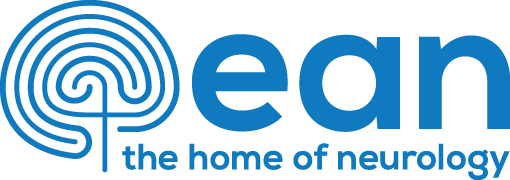
The 8th Conference of the European Academy of Neurology took place in Vienna this Summer, amidst scorching temperatures and glorious sunshine.
As warm a welcome (although a much more comfortable temperature) was waiting inside the Austria Centre, which was a fantastic venue- well laid out, and easy to negotiate, with good spaces for working, networking, and plentiful refreshments from attentive staff.
The conference was officially opened by Professors Claudio Bassetti, and Tony Marson who welcomed the phenomenal Baroness Susan Greenfield to the stage. Her opening address: “Where Neuroscience meets neurology: blowing, expanding, and losing the mind” was itself mind-blowing – a discussion of the neuroscience behind consciousness and control, simultaneously scientifically rigorous and philosophically questioning. She used models of neurodevelopment to help listeners understand her pioneering work in neurodegeneration, and discussed her current research in Alzheimer’s disease, the role of acetylcholinesterase, and whether peptide analogues of related small molecules may have therapeutic benefit.
Other stand out lectures for me included the Moritz Romberg lecture, given by Professor Bo Norrving, who spoke about stroke systems and systematics, and the Camillo Golgi lecture, given by Hans Lassman, who spoke on the contribution of neuropathology to our understanding of multiple sclerosis.
Professor Norrving reminded us of the global burden of stroke and the need for action, talking through systematic gaps and opportunities for improvement, how services can be implemented, and took us through the reclassification of stroke as a neurological illness in the ICD-11. It was a heartfelt, sincere, and inspiring talk and felt particularly timely for UK delegates, as we embrace stroke within the new neurology curriculum.
Professor Lassman talked through the extra dimensions that pathology can give to our understanding of a disease. He explained the differences between multiple sclerosis and MOG-antibody disease through pathological observations, and what this tells us in terms of location of pathology, timing of disease activity, immune system dynamics and the underlying pathological substrate.
Other headline speakers were Professor Kailash Bhatia, who gave the Brown-Sequard lecture on “The translational clinician: big gains from small observations”, using case examples to remind us of the importance of deep clinical phenotyping and the Brain Prize lecture, given by Michael Moskowitz, who spoke on “The trigeminovascular system as a template for discovery in migraine.”
Amongst these headlines there was a wealth of other offerings. From case-based workshops to focused symposia, e-posters in a quiet, removed area, and career development sessions. The wide range of topics spanned the entire neurology curriculum, and there really was something for everyone, whatever your area of interest, or level of experience. There was a fantastic offering for students and trainees with lots of case-based workshops and teaching sessions. I particularly enjoyed the clinical grand round session, led by Patrick Altman and supported by neuroradiology and pathology colleagues, with detailed discussion of three excellent, complex cases and the differential diagnoses that had been considered along the way.
I was also delighted to attend the session focusing on challenges for women in neurology, where three inspirational speakers gave an account of their journey through neuroscience, identifying challenges they had faced, approaches they had used to overcome these, and offering heartfelt advice for women facing similar obstacles. This addition to the programme felt like an important step in ensuring equal opportunities in neurology and although there is a long way to go, I felt encouraged that we are approaching an era when diversity of all kinds is being celebrated, and flexibility in working patterns and training pathways considered, if not yet encouraged. Identifying challenges allows us to discuss priorities and current problems. Discussing together how we can create equal opportunities is the first step to providing these, and these sessions are a fantastic initiative from the EAN. Thank you.
It was an absolute delight to be able to attend in person, share space and ideas over excellent coffee, and be surrounded by the buzz of a conference again. In additional to this, the conference was hybrid, meaning those unable to attend in person could attend remotely, and allowing all delegates the opportunity to rewatch sessions, or view simultaneous sessions on “catch-up”. This logistical feat feels like a positive step and sets the bar high for delivering a highly flexible, inclusive, and all-encompassing conference. I would highly recommend further involvement with the EAN to UK colleagues, who were relatively underrepresented amongst the delegates. In addition to a comprehensive, diverse conference, with opportunities for neurologists of all stages and interests, there are a multitude of educational, quality improvement and career development opportunities – visit www.EAN.org for more information.